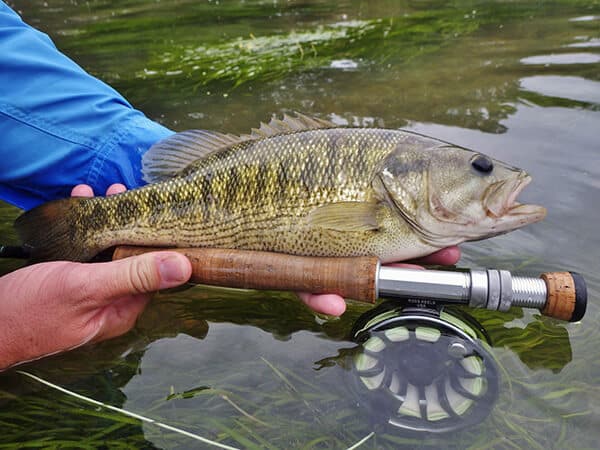Texas harbors 191 species of native freshwater fishes, 89 of which are considered imperiled. Five fish species are considered likely extinct from the state, while another six are considered extirpated, meaning they no longer exist in Texas but still occur in other areas of their native range, such as in adjacent U.S. states or Mexico. Declining freshwater fish diversity is a conservation issue not unique to Texas. Freshwater fishes are threatened throughout North America and currently have the highest extinction rate among vertebrates (7.5 extinctions per decade since the 1950s). Of the 1,213 freshwater fishes found in North America, 39 species and 18 subspecies are considered extinct. Similar to other areas of the continent, the primary cause of fish imperilment in Texas is alteration of freshwater systems (e.g., groundwater extraction and concomitant reductions in spring discharge, river fragmentation, alteration of natural river flow patterns, degradation of water quality, introduction of non-native species), which continues to occur at rates and scales that threaten the long-term persistence of native freshwater fishes.
A suite of specific regulatory and voluntary-based conservation measures has been implemented by Texas Parks and Wildlife Department (TPWD) and cooperators to manage and conserve Texas freshwater fishes (see article at link). The Upper Guadalupe River is home to 38 species of native freshwater fish including nine recognized as imperiled by TPWD: Plateau Shiner, Proserpine Shiner, Guadalupe Roundnose Minnow, Burrhead Chub, Texas Shiner, Silverband Shiner, Headwater Catfish, Guadalupe Bass, and Guadalupe Darter (for a checklist of native and non-native fishes documented to occur in the Upper Guadalupe River, visit the Fishes of Texas website at http://www.fishesoftexas.org/checklists/huc/1357). As with several of the native freshwater fishes that occur in the Guadalupe River, the river is the namesake of the official state fish, Guadalupe Bass (Figure 1). Guadalupe Bass is endemic to the Guadalupe River and other crystalline, spring-fed rivers of central Texas where it is considered a prized sport fish by river anglers. The economic value of central Texas river fishing was recently estimated to be $71 million over a 16-month period and nearly half of anglers reported specifically targeting Guadalupe Bass. Their populations are inextricably linked to natural river flow patterns, functional riparian zones, instream connectivity, and instream structural habitat features characteristic of pristine, unaltered riverscapes. The species faces a litany of immense conservation challenges, many of which stem from the fact that its native range occurs within one of the fastest growing regions of the state. The number of people living in central Texas is expected to double between 2010 and 2060, increasing to over 7.3 million people. Increased water demands associated with this burgeoning population will be met primarily by surface and groundwater withdrawals, which will undoubtedly impact the region’s spring-fed rivers. Urbanization and other land use changes associated with this population growth have the potential to directly alter natural land cover, degrade watershed conditions, and further threaten the long-term resiliency of central Texas rivers. Extirpation of Guadalupe Bass has been documented where fish habitats have been altered due to construction of dams, water withdrawals, and changes in watershed land uses.
Hybridization with non-native Smallmouth Bass has also contributed to the extirpation of Guadalupe Bass from some rivers. Native to the upper and middle basins of the Mississippi River, the Saint Lawrence River, and the Great Lakes, Smallmouth Bass were introduced into Texas with the intent of creating additional angling opportunities. In 1974–1980, over 6.8 million Smallmouth Bass were stocked in central Texas rivers including the Guadalupe, Blanco, Medina, and San Gabriel rivers, and in Cibolo and Onion creeks. Once hybridization between Smallmouth Bass and Guadalupe Bass was detected and threats to Guadalupe Bass were recognized, TPWD began to devise a strategy to prevent its local extirpation and possible extinction. Research was initiated on Guadalupe Bass life history, conservation status, and recreational fisheries, which led to publication of the initial range-wide conservation plan for the species in 1991. In 1992, TPWD developed a Guadalupe Bass rearing program to support genetic restoration and repatriation of the species, which has since produced and stocked nearly 2.4 million Guadalupe Bass in central Texas rivers. Initial stocking focused on restoration of Guadalupe Bass in the namesake Guadalupe River, and annual stockings continued over much of the past three decades. Research, monitoring, stocking, habitat restoration and preservation, and invasive species management are currently being implemented by TPWD and partners to ensure fishable population persist for current and future generations. At present, 15 populations of Guadalupe Bass have been restored or conserved throughout the region, while 25 public river access areas are being managed for Guadalupe Bass fishing (learn more at: www.tpwd.texas.gov/conserveguadalupebass).
In 2022, the Guadalupe River Chapter of Trout Unlimited (GRTU) approached TPWD about building upon the long-standing and productive collaboration centered around management and conservation of the Guadalupe River Trout Fishery to explore opportunities to do more for river fisheries throughout central Texas. This led to an initial donation of $5,000 from GRTU to TPWD to support continued stocking of Guadalupe Bass in the Guadalupe River and tributaries during 2022–2023. The conversation between TPWD and GRTU has since progressed toward exploring other project-based collaborations, such as citizen science (e.g., river fisheries surveys, Guadalupe Bass population and genetics assessments), leveraging of funding for research (e.g., potential matching funds for TPWD and university research projects focused on river fisheries), organizing volunteer labor for fish habitat and angler access improvements, leveraging engineering and restoration design expertise through Trout Unlimited to help guide future fish habitat enhancements in the Canyon tailrace and other central Texas rivers, assessment of stream reaches throughout central Texas ideally suited for development of seasonal Rainbow Trout fisheries, assessment of the range of Rio Grande Cichlid and identification of quality Rio Grande Cichlid fisheries, and assessment of the fisheries quality of stream reaches throughout central Texas. To offer input and ideas on other potential project-based collaborations between GRTU and TPWD, please contact Chris Johnson (GRTU Conservation Chair, Chris@livingwatersflyfishing.com) and Tim Birdsong (TPWD Inland Fisheries Division Deputy Director, Timothy.Birdsong@tpwd.texas.gov).
Figure 1. Guadalupe Bass Micropterus treculii, the official state fish of Texas and recognized by Texas Parks and Wildlife Department as a Species of Greatest Conservation Need. Photo courtesy of Living Waters Fly Fishing.
Author: Tim Birdsong, Deputy Director, Inland Fisheries Division, Texas Parks and Wildlife Department, 4200 Smith School Road, Austin, Texas 78744, Timothy.Birdsong@tpwd.texas.gov, (512) 389-4744

